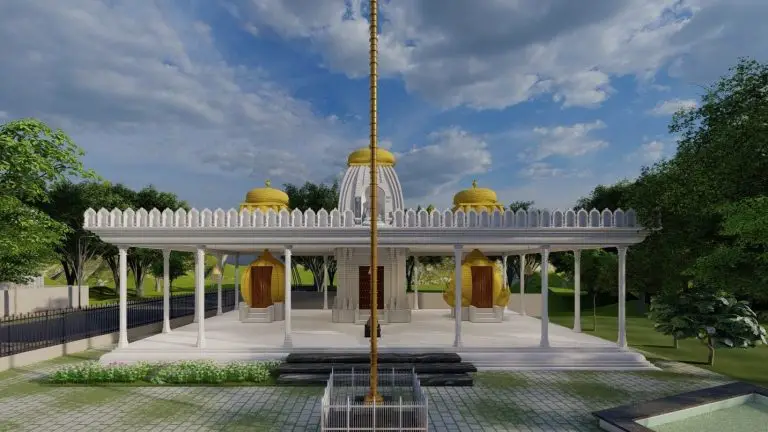Main development works for the worlds first 3D Printed Temple in India have been completed according to Hyderabad-based construction company, Apsuja Infratech. The firm worked in collaboration with a 3D printing construction company, Simpliforge Creations, for the achievement of the architectural innovation. The project features as the world’s first-ever 3D printed place of worship. It strives to embark on an architectural revolution within the region, hence it doubles up as the pride of Telangana.
Currently, the 3D Printed Temple has complete the Modak and Shivalay’s construction. Phase two of the development works will feature the construction of tall spires (Gopurams) and the Lotus, of which are underway. Its location is right within Charvitha Meadows at Burugupally, Siddipet in Telangana. As a whole, the project aims to serve as a reflection of the harmonious integration of technology and nature with sustainability.
Read Also: SVC & Lahari Officially Launch The Urban Blossom Project In India
Overview of the world’s first 3D printed temple
For its main development, the 3D structure made use of Simpliforge’s in-house system and indigenously developed software as well as material. Impressively, the company boasts the ability to print 32º inward cantilever and 51º in outward. As a result, the landmark achievement greatly showcases the immense potential of 3D printed construction.
The three-part structure marvel measures 3,8000 square feet. Moreover, it stands tall at about 30 feet and features three sanctums. Better known as Garbhas, the spaces represent a Modak that is dedicated to Lord Ganesha. In addition to a lotus-shaped home for Goddess Parvati and a square abode that is devoted to Lord Shankar.
While commenting on the project, the Managing Director of Apsuja Infratech revealed that its major structure was completely developed on-site. Hari Krishna Jeedipalli further said that its construction process employed bespoke design techniques alongside meticulous analysis. Additionally, the 3D Printed Temple Project fully followed the principles of Temple architecture.

